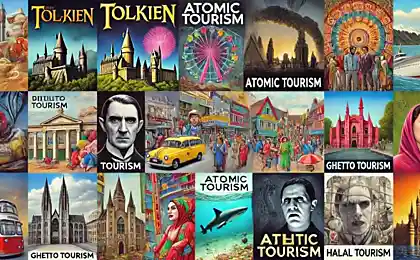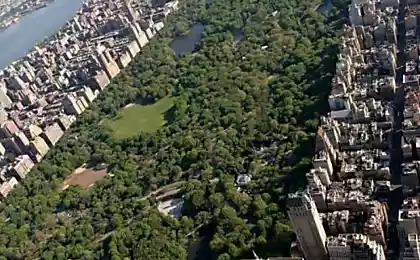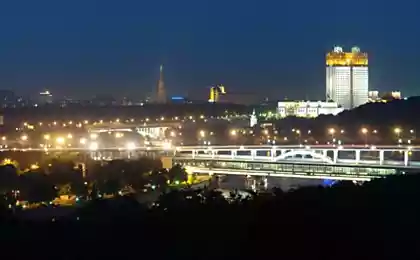561
Kolomenskoye — the mysterious attraction of Moscow
Kolomenskoye is one of the most mysterious and ancient places in Moscow. However, also the Museum-reserve under the open sky.
On its territory there is a large number of architectural monuments. This is the Church of the ascension, the House of Peter the great, a Memorial pillar to Emperor Alexander II and many other facilities.
A significant part of the Museum's historic gardens with pear alleys, medicinal plants, and even a real apiary.
There are still in Kolomenskoye and Dyakovo Gorodishche known since the days of Finno-Ugric tribes (by the way, this tribe was not spared the traditions of the Park — it suddenly disappeared).
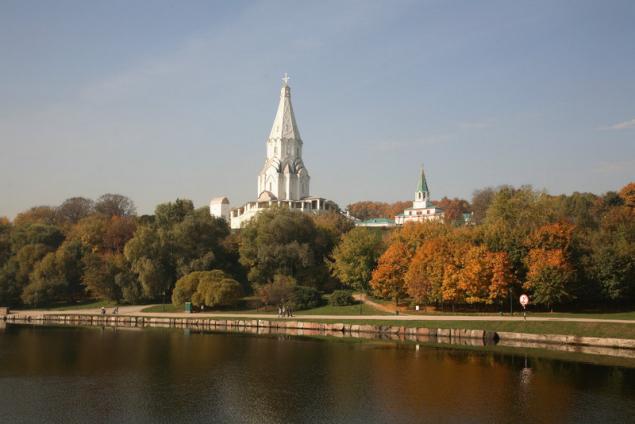
Museum-reserve "Kolomenskoye" attracts not only for its monuments. This area is associated with a large number of legends and stories, and romantic, and eerie.
Steeped in the romance of the two large boulder — Goose-the stone and the Maiden stone. According to legend, the Maiden stone of imminent motherhood, and the second of the boulders gives virility. However, the desire that you can think about these stones, not limited to romance! Touching it, you can think about any your dream. Will come true? Eyewitnesses claim that can be fulfilled, the main thing — to believe! Because can often be found sitting on the stones of people who think their desires.
They say that the ponds, which remained at the bottom of the ravine, is nothing but the traces of the horse of St. George, had flown home with the joyful tidings of victory over the serpent.
Another legend, less attractive (although who knows?) connected with the corridor of time, which is somewhere at the bottom of the ravine. Coming down here, you can find yourself in the next decade, as claimed by the newspaper "Moscow sheets" for 1832. Whether or not to go down to that mystical place — up to you!
Since 2007, around Volosov ravine (or vocal, opinions differ) go to urban legends. Some try to masquerade as archival facts. Most of the legends associated with the green mist, through which, you can be in Kolomenskoye, but...20 years later.
There are three legends: one tells of the Mongols, whom the treacherous green mist brought to the court of Ivan the terrible in 50 years after the battle, the second of the two peasants, who were returning to their village and reached it after 21 years. And the third one tells about a Soviet policeman who in the mist emptied the clip into the strange hairy creature. The savage wandered in Kolomenskoye in the XVI century, and in XX.
According to the testimony of physicists, the rate of electromagnetic radiation in the ravine exceeded 12 times, and near the two famous stones in 27.
The ravine not only excites the minds of the archeologists got more and the Church of the beheading of John the Baptist. It is here looking for the mysterious Liberia of Ivan the terrible (Library).
The Museum often do a lot of mysteries: the strange laying will be found that this place should not be, then the ladder, is also not very well known. But this is all urban legend.
Now for Kolomenskoye came from, it is gradually restored, however, recently started the reconstruction of the Palace was not in its historic location.
In Kolomna open apiary, stables and a smithy. For honey here traditionally come at the end of August. And the residents still come to collect from the trees fragrant apples former splendor of the Royal gardens.
What is the famous Kolomenskoe Park ?
1. The famous Kolomna oaks.
The most famous old-timers are becoming older, the age of some reaches 400-600 years.
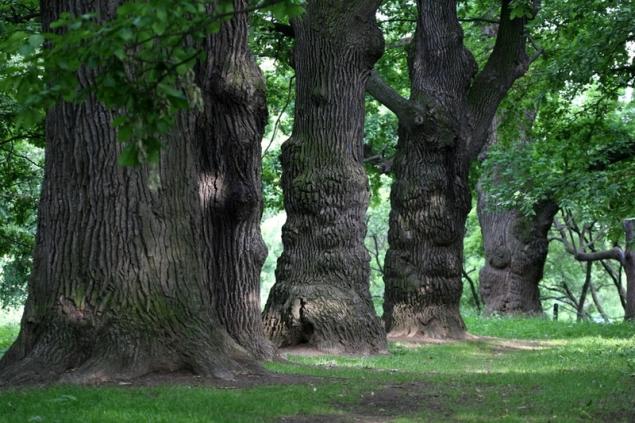
2. The alley of love.
In July 2012, city authorities opened in the Park, the Alley of love. A place filled with love, joy and romance. The place where I opened the Alley of love in Kolomenskoye Park, a secluded, hidden from prying eyes. Nice lake, flower beds, manicured fairways, white benches. During the day on weekdays there are mainly walking moms with kids, and on weekends, of course, a lot of grooms with brides.
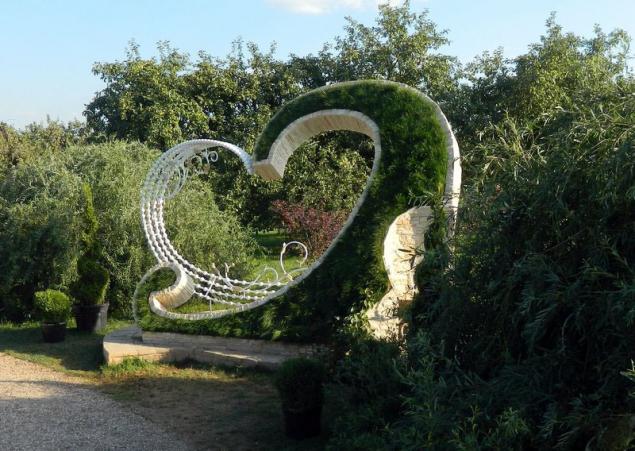
3. The gardens of the Park Kolomna.
The oldest surviving detailed descriptions of the gardens refers to the beginning of the eighteenth century (1701). To have survived the seizure, which indicates 6 gardens, where they grow apples, pears, plums, red currants, gooseberries, raspberries. Yields used "about the sovereign's use", i.e. for the Royal family, servants, and sold.
In the XVIII century and early XIX century, the gardens were sent yields even in the "North" capital St. Petersburg for the Imperial family. One of them – the Red garden – located at the Spassky gate. The second Kazan garden was "behind the Church of the Kazan state against the chorus." In the middle of XVIII century during the construction of the Kolomna Palace of the Empress Catherine II Kazan garden was laid out as a promenade.

To our days there were three gardens – Kazan, Dyakovo and ascension, the first two of them are located in the same area where it was founded in the XVII century.
Currently near ascension Manor garden is arranged beekeeper with these hives and restored Apothecary garden as an integral part of gardening of the EIGHTEENTH century.
In summary — the place is stunningly beautiful. Especially in spring, when blooming Apple orchard, the Park comes alive even more. Armed with cameras, there's plenty to see and see.published
P. S. And remember, only by changing their consumption — together we change the world! ©
Join us in Facebook , Vkontakte, Odnoklassniki
Source: moiarussia.ru/kolomenskoe-zagadochnaya-dostoprimechatelnost-moskvy/
On its territory there is a large number of architectural monuments. This is the Church of the ascension, the House of Peter the great, a Memorial pillar to Emperor Alexander II and many other facilities.
A significant part of the Museum's historic gardens with pear alleys, medicinal plants, and even a real apiary.
There are still in Kolomenskoye and Dyakovo Gorodishche known since the days of Finno-Ugric tribes (by the way, this tribe was not spared the traditions of the Park — it suddenly disappeared).

Museum-reserve "Kolomenskoye" attracts not only for its monuments. This area is associated with a large number of legends and stories, and romantic, and eerie.
Steeped in the romance of the two large boulder — Goose-the stone and the Maiden stone. According to legend, the Maiden stone of imminent motherhood, and the second of the boulders gives virility. However, the desire that you can think about these stones, not limited to romance! Touching it, you can think about any your dream. Will come true? Eyewitnesses claim that can be fulfilled, the main thing — to believe! Because can often be found sitting on the stones of people who think their desires.
They say that the ponds, which remained at the bottom of the ravine, is nothing but the traces of the horse of St. George, had flown home with the joyful tidings of victory over the serpent.
Another legend, less attractive (although who knows?) connected with the corridor of time, which is somewhere at the bottom of the ravine. Coming down here, you can find yourself in the next decade, as claimed by the newspaper "Moscow sheets" for 1832. Whether or not to go down to that mystical place — up to you!
Since 2007, around Volosov ravine (or vocal, opinions differ) go to urban legends. Some try to masquerade as archival facts. Most of the legends associated with the green mist, through which, you can be in Kolomenskoye, but...20 years later.
There are three legends: one tells of the Mongols, whom the treacherous green mist brought to the court of Ivan the terrible in 50 years after the battle, the second of the two peasants, who were returning to their village and reached it after 21 years. And the third one tells about a Soviet policeman who in the mist emptied the clip into the strange hairy creature. The savage wandered in Kolomenskoye in the XVI century, and in XX.
According to the testimony of physicists, the rate of electromagnetic radiation in the ravine exceeded 12 times, and near the two famous stones in 27.
The ravine not only excites the minds of the archeologists got more and the Church of the beheading of John the Baptist. It is here looking for the mysterious Liberia of Ivan the terrible (Library).
The Museum often do a lot of mysteries: the strange laying will be found that this place should not be, then the ladder, is also not very well known. But this is all urban legend.
Now for Kolomenskoye came from, it is gradually restored, however, recently started the reconstruction of the Palace was not in its historic location.
In Kolomna open apiary, stables and a smithy. For honey here traditionally come at the end of August. And the residents still come to collect from the trees fragrant apples former splendor of the Royal gardens.
What is the famous Kolomenskoe Park ?
1. The famous Kolomna oaks.
The most famous old-timers are becoming older, the age of some reaches 400-600 years.

2. The alley of love.
In July 2012, city authorities opened in the Park, the Alley of love. A place filled with love, joy and romance. The place where I opened the Alley of love in Kolomenskoye Park, a secluded, hidden from prying eyes. Nice lake, flower beds, manicured fairways, white benches. During the day on weekdays there are mainly walking moms with kids, and on weekends, of course, a lot of grooms with brides.

3. The gardens of the Park Kolomna.
The oldest surviving detailed descriptions of the gardens refers to the beginning of the eighteenth century (1701). To have survived the seizure, which indicates 6 gardens, where they grow apples, pears, plums, red currants, gooseberries, raspberries. Yields used "about the sovereign's use", i.e. for the Royal family, servants, and sold.
In the XVIII century and early XIX century, the gardens were sent yields even in the "North" capital St. Petersburg for the Imperial family. One of them – the Red garden – located at the Spassky gate. The second Kazan garden was "behind the Church of the Kazan state against the chorus." In the middle of XVIII century during the construction of the Kolomna Palace of the Empress Catherine II Kazan garden was laid out as a promenade.

To our days there were three gardens – Kazan, Dyakovo and ascension, the first two of them are located in the same area where it was founded in the XVII century.
Currently near ascension Manor garden is arranged beekeeper with these hives and restored Apothecary garden as an integral part of gardening of the EIGHTEENTH century.
In summary — the place is stunningly beautiful. Especially in spring, when blooming Apple orchard, the Park comes alive even more. Armed with cameras, there's plenty to see and see.published
P. S. And remember, only by changing their consumption — together we change the world! ©
Join us in Facebook , Vkontakte, Odnoklassniki
Source: moiarussia.ru/kolomenskoe-zagadochnaya-dostoprimechatelnost-moskvy/
Remember these 5 BASIC rules of first aid in dislocation!
This glass disc can store 360 terabytes of photos over 13.8 billion years






